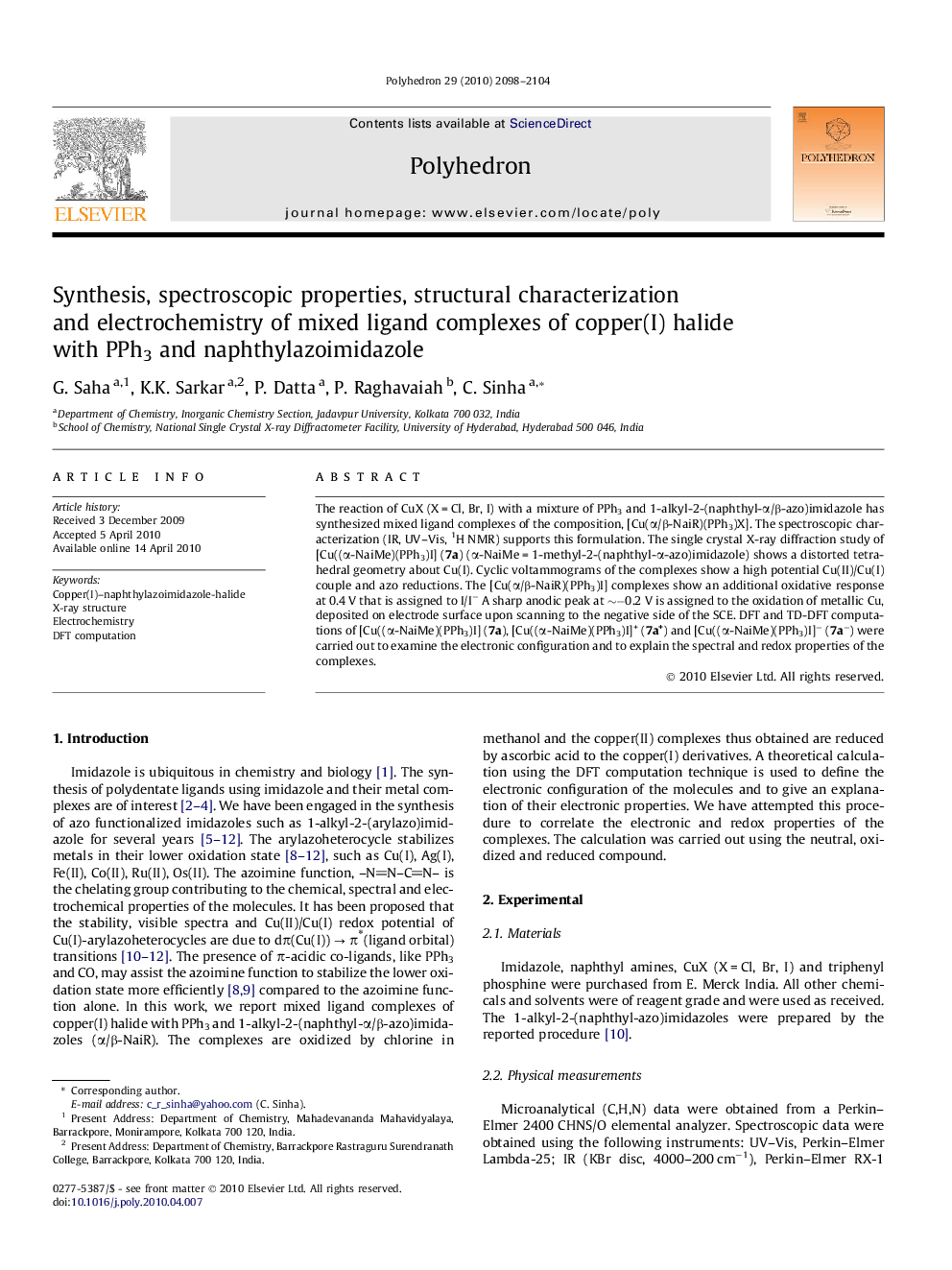| Article ID | Journal | Published Year | Pages | File Type |
|---|---|---|---|---|
| 1338990 | Polyhedron | 2010 | 7 Pages |
The reaction of CuX (X = Cl, Br, I) with a mixture of PPh3 and 1-alkyl-2-(naphthyl-α/β-azo)imidazole has synthesized mixed ligand complexes of the composition, [Cu(α/β-NaiR)(PPh3)X]. The spectroscopic characterization (IR, UV–Vis, 1H NMR) supports this formulation. The single crystal X-ray diffraction study of [Cu((α-NaiMe)(PPh3)I] (7a) (α-NaiMe = 1-methyl-2-(naphthyl-α-azo)imidazole) shows a distorted tetrahedral geometry about Cu(I). Cyclic voltammograms of the complexes show a high potential Cu(II)/Cu(I) couple and azo reductions. The [Cu(α/β-NaiR)(PPh3)I] complexes show an additional oxidative response at 0.4 V that is assigned to I/I− A sharp anodic peak at ∼−0.2 V is assigned to the oxidation of metallic Cu, deposited on electrode surface upon scanning to the negative side of the SCE. DFT and TD-DFT computations of [Cu((α-NaiMe)(PPh3)I] (7a), [Cu((α-NaiMe)(PPh3)I]+ (7a+) and [Cu((α-NaiMe)(PPh3)I]− (7a−) were carried out to examine the electronic configuration and to explain the spectral and redox properties of the complexes.
Graphical abstract[Cu(α/β-NaiR)(PPh3)X] ((α/β-NaiR = 1-alkyl-2-(naphthyl-α/β-azo)imidazole) are reported. Complexes show Cu(II)/Cu(I) and Cu(I)/Cu(0) couples along with azo reductions. DFT computation shows significant contribution of halide to HOMO and LUMO has 90% ligand character.Figure optionsDownload full-size imageDownload as PowerPoint slide
